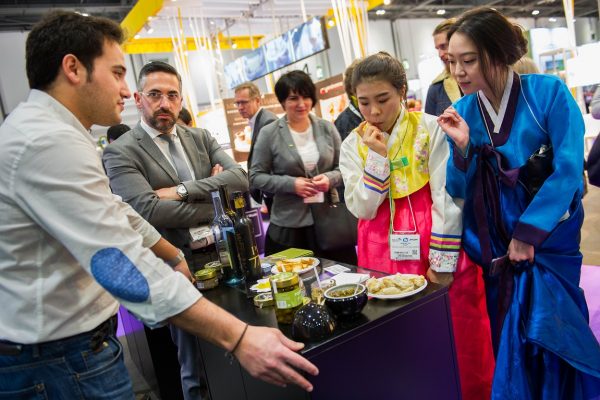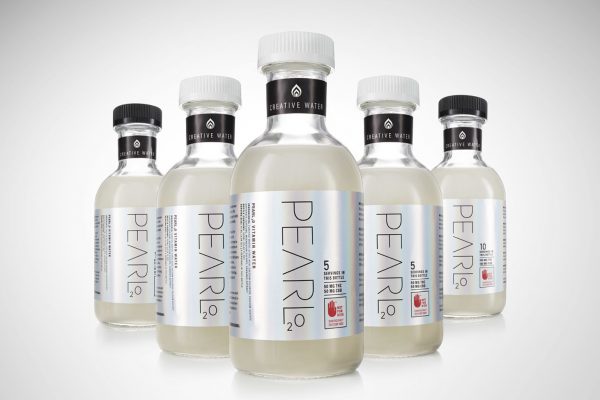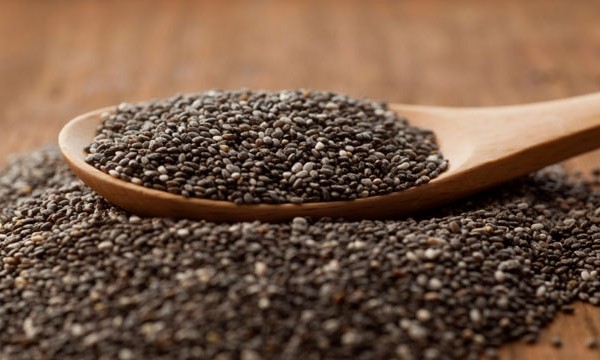How To
Botanical Beverage Basics
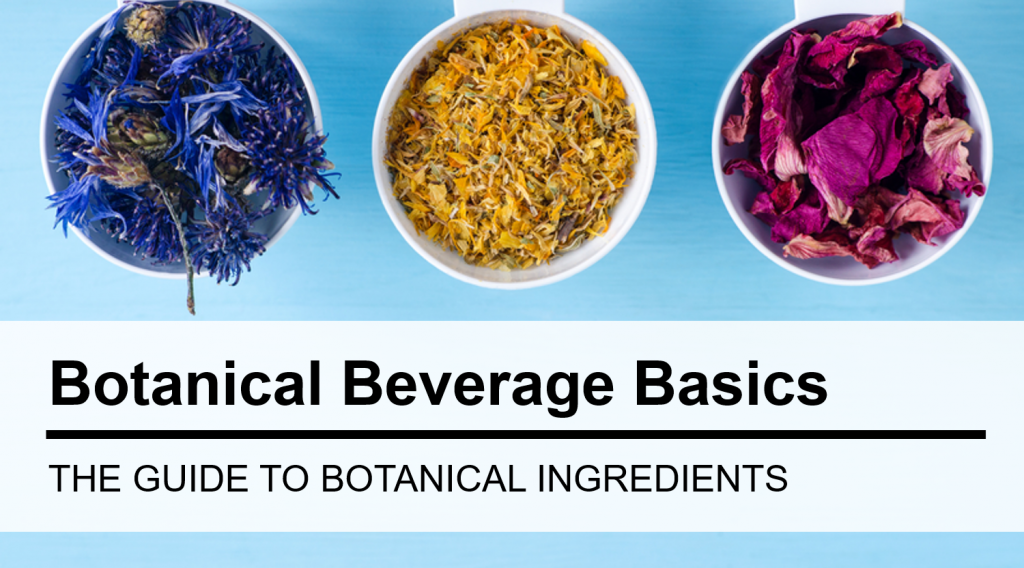 Plants first appeared on land 500 million years ago. Throughout human history, approximately 7,000 different plant species have been used as food. As consumers look for more unique, health-focused beverages, the use of botanical ingredients is on the rise. The Global Plant-based Beverages market is expected to reach $33.96 billion by 2026, growing at a compound annual growth rate of 13.3% from 2017 to 2026. According to a report by Zion Market Research, the global food botanicals market was approximately USD 1,186.1 billion in 2018 and is expected to generate around USD 1,489.3 billion by 2025, at a CAGR of around 3.2% between 2019 and 2025.
Plants first appeared on land 500 million years ago. Throughout human history, approximately 7,000 different plant species have been used as food. As consumers look for more unique, health-focused beverages, the use of botanical ingredients is on the rise. The Global Plant-based Beverages market is expected to reach $33.96 billion by 2026, growing at a compound annual growth rate of 13.3% from 2017 to 2026. According to a report by Zion Market Research, the global food botanicals market was approximately USD 1,186.1 billion in 2018 and is expected to generate around USD 1,489.3 billion by 2025, at a CAGR of around 3.2% between 2019 and 2025.
What are botanicals?
Botanicals are dried or fresh plants, plant parts, or plants which are isolated or combined chemical components, extracted in ethanol, water, other organic solvents, essential oils, oleoresins, and other extracts to be used for fragrance, flavoring, functional health benefits, and medicine. Botanicals have been used over an expanse of time in a wide variety of ways, including ingredients in beverages. There is evidence that as early as A.D. 150, gladiators of the Roman Empire ingested a drink made from the ashes of charred plants to promote healing.
What is behind the growing popularity of botanicals?
Many of the rising ingredient trends for 2019, which includes the increasing demand for function-focused, traditional medicinal, and niche and premium ingredients, are laying the foundation for further experimentation with botanicals. Consumers associate botanicals with a more traditional and natural approach to wellness and are increasingly seeking out foods and beverages that incorporate ingredients that help them achieve nutritional and emotional balance. Datassential reported 176% growth of turmeric on menus over the past four years, and Nielson cited almost $200 million in sales for ginger-flavored beverages in the last year.
The growing demand for clean label and organic products also contributes to the popularity of botanicals. As consumers look for more ways to avoid artificial flavors and colors, they are increasingly open to the use of botanicals in a wide range of beverages from functional to craft beer and cocktails.
Additive Approval
Just because an ingredient comes from a plant does not mean it can be marketed as a beverage ingredient. The U.S. Food and Drug Administration (FDA) requires that ingredients that go into foods and beverages be either approved as a food additive through premarket review and approval, or already be generally recognized as safe (GRAS). Many botanical ingredients have been used for centuries and are GRAS, but any ingredient that is not already recognized as safe must receive prior approval by the FDA. Per the FDA, the use of a food substance may be GRAS either through scientific procedures or, for a substance used in food before 1958, through experience based on common use in food. It can take several years for a manufacturer to gather all of the scientific evidence required by FDA to establish an ingredient’s safety.
In the European Union all food additives are identified by an E-number and must be authorized before they can be used in foods or beverages. Food additives are always included in the ingredient lists of foods in which they are used. The authorization procedure for a new additive or new use of an existing additive, starts with submission of a formal request to the European Commission consisting of an application containing scientific data on its proposed uses and use levels.
Sourcing Botanicals
Due to potential issues of adulteration and fraud in natural ingredients, it’s vital to pay attention to the source of botanicals. Botanical can refer to the plant raw material, the ingredient ready for manufacture, or a finished product. Depending on its stage in the process, the identification, testing, and regulation of the plant can change. For example, once coffee beans have been dried and are ready for shipping, the botanical identification shifts from the coffee plant to the coffee itself. Botanical products are often produced in one place and transported to another.
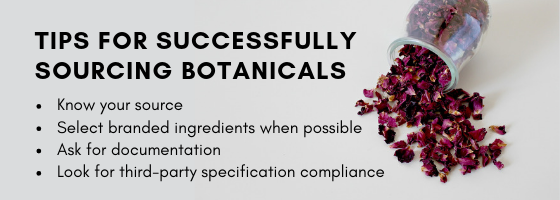 Selecting known and branded ingredients can help reduce risk, but even branded ingredients can be adulterated. Asking ingredient suppliers for documentation of identity, quality testing samples of the ingredient, and looking for conformity with third-party specifications, can help ensure that the ingredients you purchase align with the quality standards of your beverage. Keep in mind that many botanical ingredients are native from different parts of the world, which can affect the cost and complexity of finding and shipping them. Sourcing and testing quality botanical ingredients can be costly and time-consuming and should be accounted for as you plan for formulation and production.
Selecting known and branded ingredients can help reduce risk, but even branded ingredients can be adulterated. Asking ingredient suppliers for documentation of identity, quality testing samples of the ingredient, and looking for conformity with third-party specifications, can help ensure that the ingredients you purchase align with the quality standards of your beverage. Keep in mind that many botanical ingredients are native from different parts of the world, which can affect the cost and complexity of finding and shipping them. Sourcing and testing quality botanical ingredients can be costly and time-consuming and should be accounted for as you plan for formulation and production.
Formulation Challenges
In addition to sourcing, formulating a beverage with botanicals also presents challenges. Many natural botanical ingredients have distinctive textures, flavors and color profiles that significantly impact the end product. Solubility is another aspect to address throughout formulation and production. You can purchase water-soluble extracts, but not all ingredients have an available extract. Carbonation of a beverage can add another layer of complexity to using botanical ingredients because if they are not water-soluble, there may be sediment leftover in the tanks. It is essential to taste the product throughout the development process so that adjustments can be made. Shelf-life testing and tasting at various stages should also be conducted. Finding a formulator who is familiar with the botanical ingredient can help ensure it is optimized for its properties within your final formula.
The Future of Botanicals
As demand for botanical ingredients grow, so too does the related expertise and technology. There are more transparency and traceability efforts in place along the supply chain as well as new and more affordable quality testing. New methods are being developed to help micro-encapsulate and disperse ingredients in better ways. There is also technology that improves extraction and helps deodorize and de-flavor ingredients. There has never been a better time to take a closer look at botanicals and their potential to inspire fresh and innovative beverage ideas.
Original article was published in Beverage Industry Blog.

